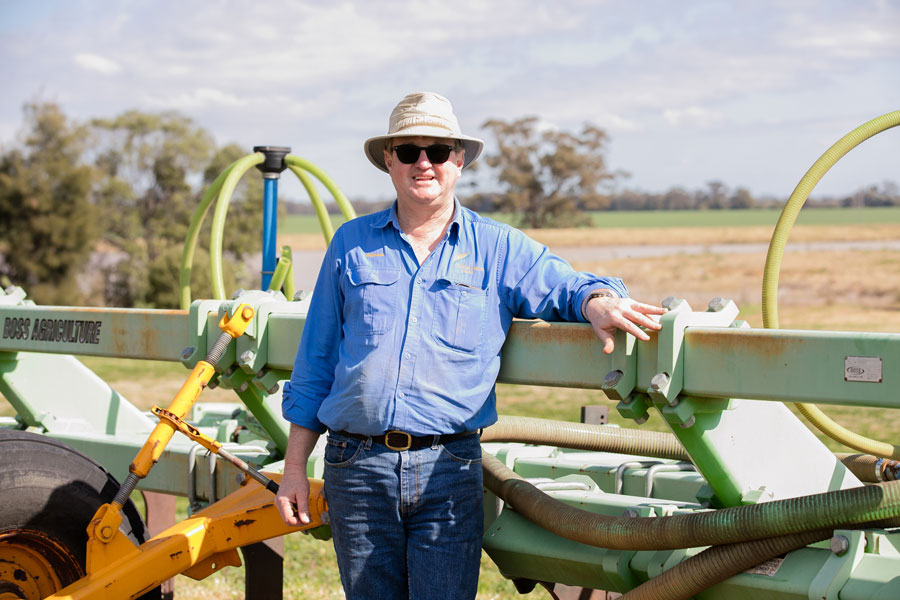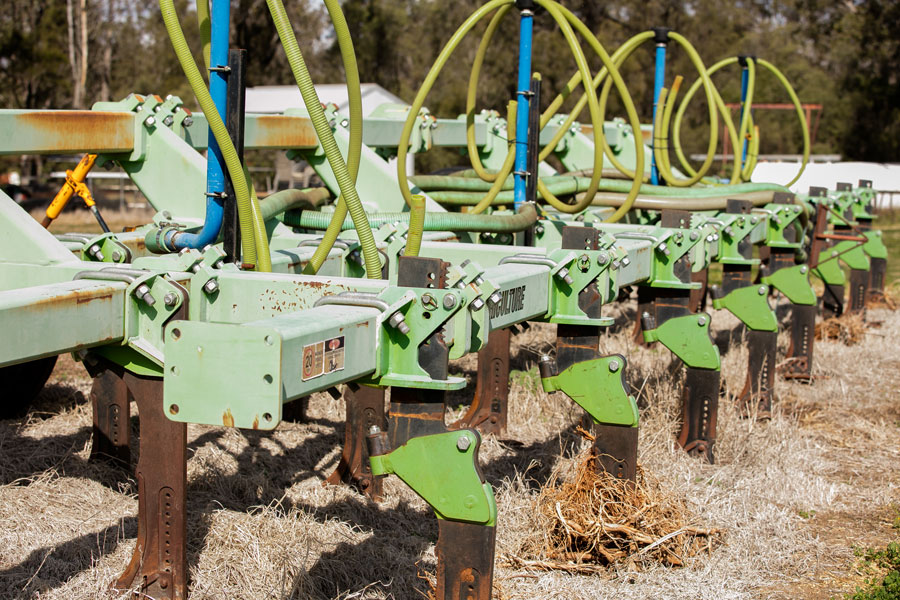It has been almost a decade since Moree-based grower Michael Ledingham started the deep-banding process to address low phosphorus levels. Back then, he was hosting a trial organised by Queensland Department of Agriculture and Fisheries senior research scientist Dr Dave Lester. “Through soil testing, we realised phosphorus concentrations were generally low at depth across the farm, although surface phosphorus levels were not too bad,” Michael says.
In 2013, fertiliser was applied across the farm in test strips. “We applied 100 kilograms per hectare of Starter Z at a row spacing of 20 centimetres. We aimed for 20 to 25cm depths using an old AFM cultivator with a 650-pound tyne breakout.”
It was slow and time-consuming. “The AFM wasn’t really up to the task. In reality, it was only going down 15 to 20cm, which is really not enough for this deep phosphorus to show any responses.”

Moree-based grower Michael Ledingham has converted a cotton ripper to carry out deep banding on the farm. Photo: Mel Jensen
Although visual differences during various crops and crop growth stages were noticed, recording any yield differences proved difficult. “We had problems with header monitors and operators inputting incorrect settings,” he says.
Then the drought started. Its onset stopped both crop activity and any attempts to monitor the strips.
Today, Michael – who grows wheat and chickpeas in winter and sorghum and dryland cotton in the summer – says he is ready for another crack at it. “We feel that improved telematics on the headers, combined with weigh scales on chaser bins and trucks, may mean that many of the harvest issues are now behind us and we can work out the impact of deep phosphorus.
“Our view is that if we can get the phosphorus down there, then we should be able to show some pretty fair response. In any case, we have declining phosphorus – we know that from recent tests and we need to address it.”
Long-running GRDC-supported research continues to illustrate that nutrient deep banding is important in addressing the northern region’s declining soil fertility. The process aims to tackle two issues – this nutrient’s immobility in clay soils and the region’s reliance on stored soil moisture.

This converted cotton ripper is tasked with place fertiliser 25 to 30cm deep on the Ledingham’s Moree farm. Photo: Mel Jensen
Michael has converted a cotton ripper for the job. “It is not elaborate, but we will be able to place fertiliser 25 to 30cm deep.”
This is deeper than the original trials. “We want to go deeper this time because Dave and University of Queensland Professor Mike Bell suggested it. We take notice of the experts.”
In terms of timing, the aim is to apply fertiliser at a sufficient rate to last for five years through the cropping rotation. “We just need fertiliser prices to come down.”
In a bid to keep the process simple, Michael has chosen 75cm spacings. “We are on a 38cm band width for cereal crops so, in theory, we’d be putting it in between rows. For the same reason, we chose five years. It is an easy number to get around with one bit of machinery. But we do soil tests every year, so we could go in earlier or more frequently if we needed to.”

























































